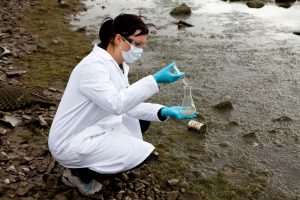The EPA announced it transmitted the final 2020 Missouri Clean Water Act (CWA) Section 303 (d) List of Impaired Waters to the state on September 13, 2021.
CWA Section 303(d) requires states to submit their lists of impaired waters to the EPA for approval every two years.
“The 303(d) List is an important water quality monitoring and assessment tool,” says Acting EPA Region 7 Administrator Edward H. Chu in the EPA news release. “EPA’s decision to identify these water bodies as impaired … ensures that [CWA] protections for aquatic life are in place to safeguard against the impacts of nutrient pollution.”
“The objective of the Act is the restoration and maintenance of the chemical, physical and biological integrity of the country’s water,” states the Impaired Waters section on the EPA’s website. “One of the goals is to achieve water quality that is both ‘fishable’ and ‘swimmable’ by the mid-1980s. While the date has passed, the goal remains and efforts to attain it continue.” Regulations governing impaired waters are found in 40 Code of Federal Regulations (CFR) 130.7.
Besides a list of impaired waters, the state reports submitted to the EPA are required to include:
- A description of the method used to develop the impaired waters list,
- The data and information used,
- The decision rationale,
- A list of any waters that may soon become impaired,
- A priority ranking based on the severity of the pollution and the designated use of the water body,
- A list of pollutants to be regulated,
- Plans for establishing a total pollutant load and to parse out the load from point and nonpoint sources with a margin of safety, and
- Total maximum daily load(s) (TMDL) of the pollutant(s) in the water body for impaired waters on the list.
A TMDL is the calculation of the maximum amount of a pollutant that can enter a water body without it exceeding the applicable water quality standards for that particular body of water.
“Typically, one TMDL is developed for each pollutant that is threatening a waterbody, therefore a waterbody may have more than one TMDL in place at a time,” reports The National Agricultural Law Center. “While it is more common for a TMDL to address one specific pollutant, in some instances a single TMDL may be developed to address multiple pollutants in a waterbody or watershed.”
The National Agricultural Law Center adds that a “TMDL should clearly identify the connection between the impairment of the waterbody, the causes of impairment, and the pollutant reductions needed to meet the relevant water quality standards. If EPA does not approve a state’s TMDL, then the [EPA] will develop its own TMDL for the waterbody.”
“After a TMDL is approved, it gets implemented through a combination of CWA permits and a variety of state, local, and federal programs. Both point and nonpoint sources of pollution will be affected by TMDL pollutant reduction requirements. Under the CWA, anyone who discharges a pollutant into a waterbody from a point source, an identifiable source such as a pipe or a ditch, requires a permit from EPA. Once a TMDL is established for a waterbody, point source permits will set pollutant limitations based on the TMDL. Pollution that enters a waterbody via nonpoint source pollution, such as agricultural runoff or eroding sediment, does not require a CWA permit. Therefore, state, local, and federal programs help to regulate pollution from nonpoint sources to meet the relevant TMDLs for a particular waterway.”
In Missouri’s case, the EPA partially approved the Missouri Department of Natural Resources’ (MoDNR) 2020 Impaired Waters List on November 30, 2020.
“However, EPA disapproved the state’s decision not to list 40 water bodies, because the existing and readily available data and information for those water bodies indicated impairments of lake numeric nutrient criteria,” states the Agency’s news release. “Specifically, EPA identified these 40 water bodies for inclusion on Missouri’s 2020 CWA Section 303(d) List for chlorophyll-a.”
“EPA relied on available data and the state’s listing methodology to add additional impaired water bodies not identified by the state.”
It should not come as a surprise that the EPA decided to add more waters to the state’s impaired waters list. According to the EPA Water Quality Assessment and TMDL Information website, 70.9% of lakes, reservoirs, and ponds assessed in the United States are categorized as impaired. For rivers and streams, 52.9% of those assessed are classified as impaired, and 79.5% of assessed bays and estuaries are considered impaired. These numbers do not include wetlands, the Great Lakes, coastal shorelines, or ocean waters.
These numbers also do not take into consideration those bodies of water that are not assessed, which include 31.4% of rivers and streams; 55.3% of lakes, reservoirs, and ponds; and 36.1% of bays and estuaries.
As of 2014, the EPA reported that more than 70,000 TMDLs had been completed. However, analyzing results is difficult “because the entire sequence of TMDL development, TMDL implementation and impaired waters recovery often takes several years,” according to the EPA website’s Impaired Waters Restoration Process section.

